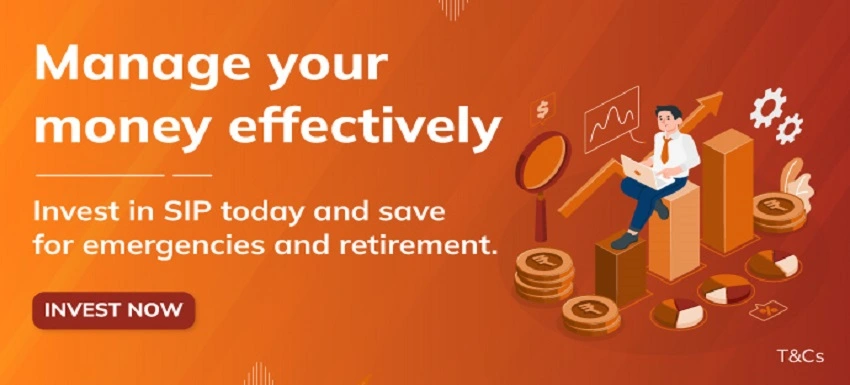THE
ORANGE
HUB
What is Buy the Dip Strategy in Mutual Fund - ICICI Bank

In stock markets, there's a strategy that seasoned investors often play by known as the ‘Buy the Dip’ strategy. But what exactly is it and how can you use it to your advantage when it comes to Mutual Funds? In this comprehensive guide, we will explore the ‘Buy the Dip’ strategy, break down its components and equip you with the knowledge to navigate Mutual Fund investments better. Whether you're new to investing or looking to enhance your portfolio, understanding this strategy is your key to potentially higher returns.
Understanding the ‘Buy the Dip’ strategy
The ‘Buy the Dip’ strategy is a tactical approach employed by investors to seize opportunities when markets experience temporary setbacks or corrections. Instead of succumbing to panic and selling off investments during market downturns, this strategy encourages investors to view such periods as potential buying opportunities. The underlying philosophy is grounded in the belief that markets tend to recover over time, offering the chance to acquire high-quality assets at discounted prices.
Timing is of the essence when it comes to executing the ‘Buy the Dip’ strategy. However, it is important to acknowledge that accurately predicting market bottoms is exceedingly challenging. Successfully implementing this strategy involves a combination of research, analysis and a long-term perspective.
The fundamentals of investing remain unchanged. Regardless of short-term market fluctuations, you should focus on understanding the financial health and growth potential of the companies you're investing in. ‘Buy the Dip’ is not a quick-fix solution but rather a patient and disciplined approach to investing. It requires the resilience to endure short-term market volatility and the conviction to hold onto investments during difficult times.
Illustrating the ‘Buy the Dip’ strategy
Let's illustrate the ‘Buy the Dip’ strategy with an example:
Raj is an investor who has been tracking the stock market. He identifies a fundamentally strong company but notices that its share price has been consistently high for some time. However, due to a sudden market correction, the company's shares have dipped significantly. The stock, which once traded at ₹ 1,200 per share, has now fallen to ₹ 1,000 per share.
Confident in the company's long-term potential, Raj decided to put the ‘Buy the Dip’ strategy into action. He allocates a portion of his investment portfolio to purchase 100 shares of this company, as its stock price continues to decline below ₹ 1,000. For every X% decrease in the share price from ₹ 1,000, Raj buys an additional 20 shares. Over the following months, he has accumulated 100 shares at an average price of ₹ 875 per share.
In the subsequent year, the market sentiment shifts and the company reports strong quarterly results. Consequently the stock gradually recovers, eventually reaching ₹ 1,200 per share once again. Thanks to his implementation of the ‘Buy the Dip’ strategy, Raj now holds shares with an appreciated total market value.
Advantages of the ‘Buy the Dip’ strategy
Let's explore some of the top advantages of the ‘Buy the Dip’ strategy:
Lower entry prices:
By buying the dip, investors can acquire assets at prices lower than their recent highs, potentially leading to higher returns when the market eventually rebounds
Long-term value:
For those with a long-term investment horizon, this strategy offers an opportunity to accumulate quality assets at a discount, which can result in capital appreciation over time
Risk mitigation:
Strategically purchasing during market downturns allows investors to average their cost basis, reducing the impact of short-term market volatility on their overall portfolio
Psychological benefits:
Successfully implementing the ‘Buy the Dip’ strategy can instil
Disadvantages of the ‘Buy the Dip’ strategy
Let's consider some of the drawbacks associated with the ‘Buy the Dip’ strategy:
Timing risks:
Accurately predicting market bottoms is exceptionally challenging and attempting to time the market can lead to mis-timed entries, resulting in further losses if the market continues to decline
Lack of immediate recovery:
Markets may not bounce back immediately after a dip and investors might need to wait for an extended period before seeing positive returns. This requires patience and a long-term investment perspective
Financial stress:
Implementing the ‘Buy the Dip’ strategy requires having additional cash or liquidity available. If investors overextend their finances for these purchases, it can lead to financial stress and potential forced selling in case of further market declines
Market sentiment:
Market direction is influenced by investor sentiment. While the ‘Buy the Dip’ strategy assumes that the market will recover, if negative sentiment persists, it may take longer for a rebound, affecting the strategy's effectiveness.
Before you dive in
Before diving headfirst into the ‘Buy the Dip’ strategy, there are essential considerations to keep in mind:
Long-term perspective:
This strategy is most effective for investors with a long-term horizon. It requires the patience to weather short-term market volatility and the belief in the eventual recovery of asset prices
Financial capacity:
Ensure you have the financial capacity to invest during market downturns without jeopardising your immediate financial needs and obligations. Avoid overextending your finances
Risk tolerance:
Assess your risk tolerance honestly. The ‘Buy the Dip’ strategy involves a degree of risk and it's crucial to align your investments with your risk comfort level
Due diligence:
Continue to focus on the fundamentals of the companies you invest in. Understand their financial health
The ‘Buy the Dip’ strategy can be a valuable tool for investors with a long-term perspective and the financial capacity to endure short-term market fluctuations. However, it's essential to be mindful of the associated risks, including the challenge of timing the market and the potential for prolonged recovery periods. Carefully assess your risk tolerance and financial situation before adopting this strategy.
Scroll to top











